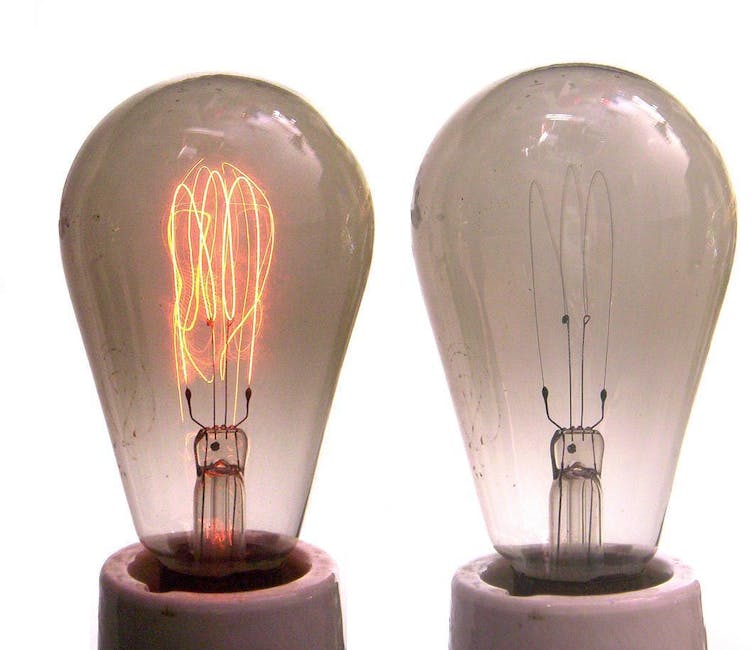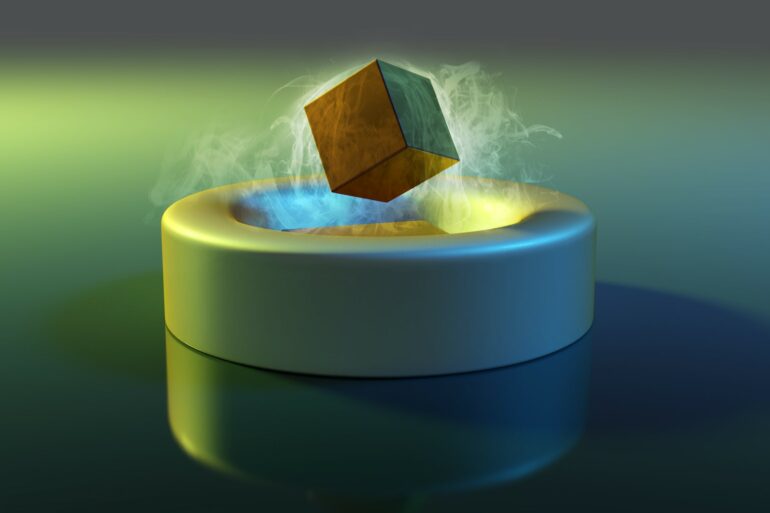The modern world runs on electricity, and wires are what carry that electricity to every light, television, heating system, cellphone and computer on the planet. Unfortunately, on average, about 5% of the power generated at a coal or solar power plant is lost as the electricity is transmitted from the plant to its final destination. This amounts to a US$6 billion loss annually in the U.S. alone.
For decades, scientists have been developing materials called superconductors that transmit electricity with nearly 100% efficiency. I am a physicist who investigates how superconductors work at the atomic level, how current flows at very low temperatures, and how applications such as levitation can be realized. Recently, researchers have made significant progress toward developing superconductors that can function at relatively normal temperatures and pressures.
To see why these recent advances are so exciting and what impact they may have on the world, it’s important to understand how superconducting materials work.

Most materials offer resistance when electricity runs through them and heat up. Resistance is how filaments in an incandescent lightbulb produce light.
Ulfbastel/Wikimedia Commons, CC BY-SA
A resistance-free material
A superconductor is any material that conducts electricity without offering any resistance to the flow of the electric current.
This resistance-free attribute of superconductors contrasts dramatically with standard conductors of electricity – like copper or aluminum – which heat up when current passes through them. This is similar to quickly sliding your hand across a smooth, slick surface compared to sliding your hand over a rough rug. The rug generates more friction and, therefore, more heat, too. Electric toasters and older-style incandescent lightbulbs use resistance to produce heat and light, but resistance can pose problems for electronics. Semiconductors have resistance below that of conductors, but still higher than that of superconductors.
Superconductive materials repel magnetic fields, making it possible to levitate a magnet above a superconductor.
Another characteristic of superconductors is that they repel magnetic fields. You may have seen videos of the fascinating result of this effect: It is possible to levitate magnets above a superconductor.
How do superconductors work?
All superconductors are made of materials that are electrically neutral – that is, their atoms contain negatively charged electrons that surround a nucleus with an equal number of positively charged protons.
If you attach one end of a wire to something that is positively charged, and the other end to something that is negatively charged, the system will want to reach equilibrium by moving electrons around. This causes the electrons in the wire to try to move through the material.
At normal temperatures,…



